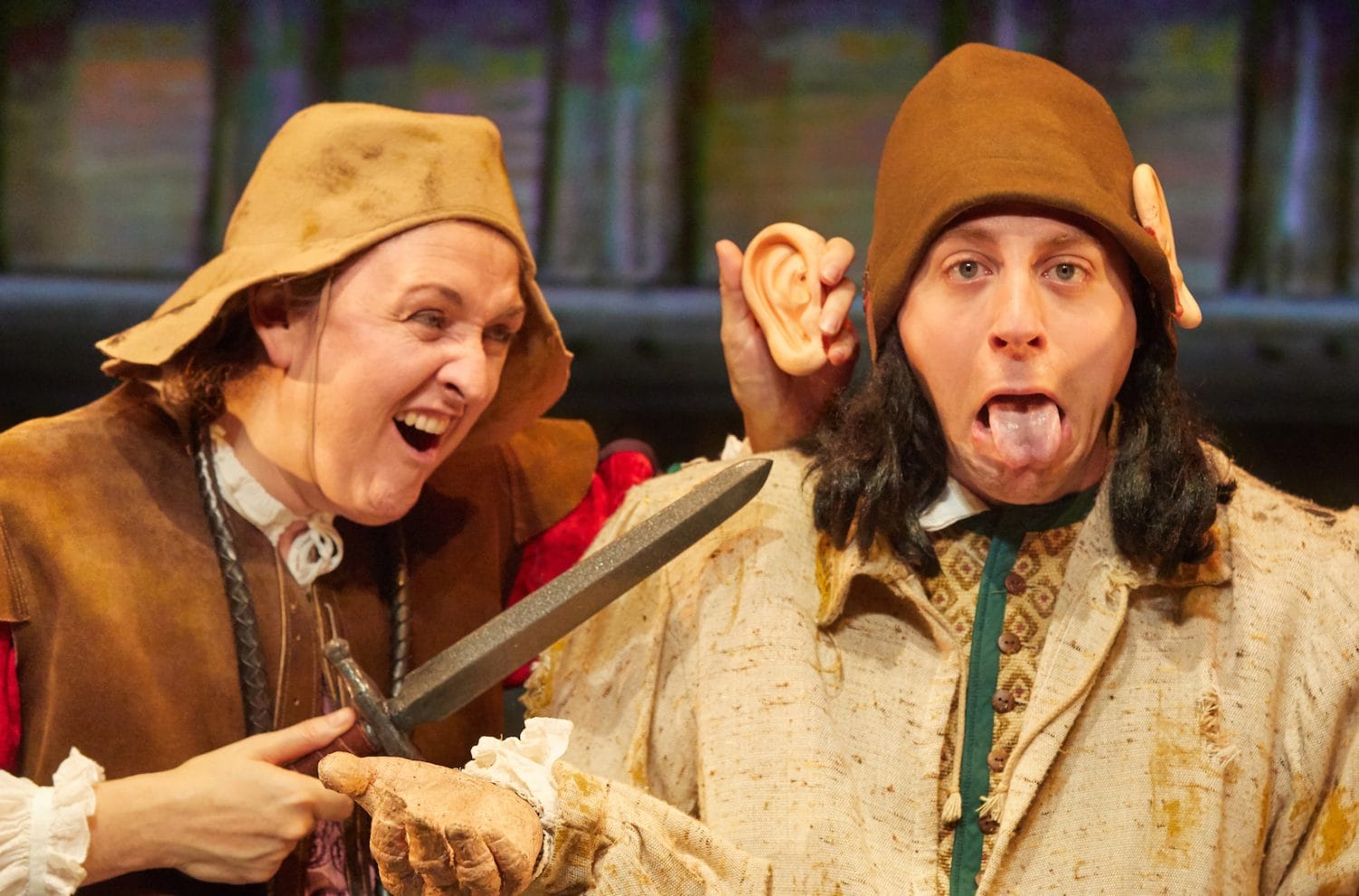Prepare yourself to dive into the Tudor era, a time wrapped in secrets and drama. In this deep dive into Tudor history, we’ll expose the strange habits, surprising rules, and dark events that made this period so infamous. From their odd bathing habits to how they handled menstruation, we’ll peel back the layers of history and reveal the shocking truth about life in Tudor England.
Horrible Facts About the Tudors
Okay, so we’ve all seen the movies and TV shows about the Tudors, right? All those fancy clothes, glittering jewels, and dramatic power struggles. But let’s be real for a second. Behind the glamor, Tudor England was a pretty rough place to live. Life expectancy was short and many people, particularly those in poverty, struggled to survive due to disease and inadequate healthcare. Sanitation was practically nonexistent, and if you weren’t at the top of the social ladder, well, life was cheap.
The Tudors: A Reign of Cruelty and Filth
One of the most shocking things about the Tudor period is the sheer level of filth that was considered normal. Imagine walking through streets covered in mud, garbage, and even human waste. That’s right, chamber pots (basically, toilets) were often just emptied out of windows! The stench must have been overwhelming, and it was a breeding ground for diseases like the plague.
And you thought your house was messy? Even the royal palaces weren’t exactly sparkling clean. Sure, they looked impressive, but with fleas everywhere and not much in the way of sanitation, they were probably pretty awful to live in.
Tudors’ Legal Code: A Brutal Tool of Oppression
Don’t even get me started on the Tudor legal system, which some experts believe was designed to disenfranchise and control the poorer classes. If you committed a crime, even something minor, you could be looking at punishments that would make your skin crawl. Boiling alive, being burned at the stake, or even being ripped apart were all common forms of execution. These gruesome punishments were not only meant to punish the guilty but also to serve as a warning and a form of entertainment for the masses. It’s enough to make you grateful for modern-day laws, right?
Uncovering the Depraved Sexual Exploits of the Tudor Court
Life at court was just as messy, but in a different way. Power and pleasure went hand-in-hand, and there were plenty of scandals involving forced marriages, secret affairs, and, well, let’s just say that consent wasn’t exactly a thing back then. Historians continue to debate the extent to which these behaviors were accepted or tolerated within Tudor society.
The Tudors: Living in Fear
And if you thought people were superstitious now, the Tudors took it to a whole new level. People genuinely believed in witchcraft, and fear of the supernatural was everywhere. If someone didn’t like you, they could easily accuse you of being a witch, which often didn’t end well.
Religion was a huge deal back then, but it wasn’t exactly a peaceful time. England went through some major religious upheaval during the Tudor era, most notably the English Reformation, when Henry VIII broke with the Roman Catholic Church. One minute you’re Catholic, the next you’re Protestant, and if you weren’t careful, you could find yourself on the wrong side of the religious divide. This often meant persecution, imprisonment, or even death.
It’s important to remember that we’re getting just a glimpse into a very complex period. Historians are still uncovering new information about the Tudors all the time, so what we think we know might change as more evidence comes to light. But one thing’s for sure: life in Tudor England was definitely not for the faint of heart.
What are Some Weird Facts About the Tudor Period?
Many of the customs and beliefs held by the Tudors would be considered strange or unusual by today’s standards. For instance, imagine wanting a divorce – totally normal today, right? Well, back then, it was a big no-no. The only way out of a marriage was an annulment, which was basically like saying the marriage never happened. And guess what? You could only get one if the marriage wasn’t consummated. Awkward!
And you know how some people are really into their hobbies? Well, the Tudors took it to a whole other level, especially when it came to hunting. We’re talking about King Henry VIII having a custom-made hunting outfit stitched together from the fur of 2,000 rabbits! Talk about dedication (and a lot of rabbits)!
Now, this next one might sound unbelievable, but bear with me. The Tudors genuinely believed that their king possessed healing powers, specifically the ability to cure a disease called scrofula, which affects the lymph nodes. People would literally queue up for hours just to be touched by the king, hoping for a miracle cure. And get this, some folks even claimed they were healed! Was it the power of suggestion or something more? We may never know!
Speaking of beliefs, the Tudors were a pretty superstitious bunch. Astrology, alchemy, witchcraft – you name it, they believed in it. They even thought the world was going to end in 1588! Can you imagine the collective freakout that must have caused? People were probably preparing for Doomsday left and right!
And finally, let’s talk about jousting. This wasn’t just a fun pastime for the Tudors; it was a full-blown obsession! Imagine two knights charging at each other on horseback with giant lances – talk about an adrenaline rush! Of course, it was incredibly dangerous, and many knights ended up seriously injured or even killed. I guess some things never change – people love a good spectacle, even if it comes with a side of danger!
So there you have it – just a glimpse into the weird and wonderful world of the Tudors. It’s fascinating, and a little bit creepy, to think about how different life was back then. It makes you appreciate how far we’ve come, right?
Why did the Tudors not bathe?
Okay, so you might have heard that the Tudors never bathed. And while it’s true that they didn’t exactly have showers or hop into a bubble bath every night, it’s a bit more complicated than that. They didn’t just decide to live in a perpetual state of stink!
Imagine this: hauling buckets of water, chopping wood to heat it up, and waiting for what feels like ages for a tub to be ready. Not exactly a quick jump-in-the-shower kind of deal, right? Bathing back then was hard work, and for most people, it was a luxury they couldn’t afford very often.
Plus, clean water wasn’t exactly flowing from every tap like it does today. In cities, especially, water sources could be pretty polluted. Think about it – would you want to bathe in water that could potentially make you sick? It’s no wonder people were a bit hesitant.
Now, here’s where it gets interesting. Some Tudors actually believed that too much bathing was bad for you! They thought it weakened your system and made you more prone to illness. Can you imagine telling your doctor today that you’re worried about showering too much?
Of course, the wealthy Tudors had it a bit easier. They could afford servants to take care of all the hard work and might have even had their own private bathing areas. They also had access to fancy soaps and perfumes – because, yes, even back then, people cared about smelling good!
But what about everyone else? Well, they had to get a bit more creative. They used scented cloths, herbs, and even sweat baths to freshen up.
So, while the Tudors didn’t bathe as frequently or in the same way we do today, it wasn’t because they were totally opposed to cleanliness. They had their reasons, and honestly, when you think about their circumstances, it kind of makes sense!
What were the swear words of the Tudors?
We’ve talked about how different life was back in Tudor times, but some of their favorite phrases would make even a sailor blush! If you were transported back to Tudor England, you’d probably find yourself utterly confused by some of their expressions.
Think of “God’s blood!” – probably the Tudor equivalent of our “Oh my God!” when something shocked them, or maybe when that ale mug took a tumble. Along the same lines, they’d blurt out “God’s wounds!” – picture someone stubbing their toe on a ridiculously large piece of furniture. Now, because people then were just as likely to shorten things as we are now, “God’s wounds” became “Zounds!” – catchy, right?
And just like us, the Tudors loved their shortcuts. They were all about those minced oaths – sneaky little shortened versions of heavier phrases. Take “Marry!” – a quick nod to “By Mary!” Or “Gad!” – a less holy version of “By God!”
But it wasn’t all about religious exclamations. If someone thought you weren’t the sharpest tool in the shed, you might hear “Turd-brain!” coming your way. Feeling a bit down on your luck? “Dunghill!” might have been the insult hurled at you. And much like today, calling someone a “Knave!” meant they were about as trustworthy as a fox guarding the henhouse. Bad manners? Expect a hearty “Varlet!” thrown your way.
And then there’s “Whoreson!” – not one you’d want to hear, as it implied someone was born out of wedlock. Definitely a fighting word back then!
It’s important to note that while we can find lists like these, figuring out exactly how often these words were used, and by whom, is a bit of a historical puzzle. Some experts think these words were actually pretty strong even for the Tudors and wouldn’t be thrown around lightly. Others suggest they might have been more everyday expressions. It’s an ongoing debate, and who knows what other linguistic gems historians might dig up in the future?
So, there you have it – a peek into the wild world of Tudor swearing! It just goes to show that while times change, our need to express ourselves, whether it’s frustration, surprise, or just plain annoyance, well, that’s something that sticks around.
What problems did the Tudors have?
The Tudor period, while often romanticized, was fraught with challenges that would make modern life seem like a walk in the park. From health crises to religious persecution, the Tudors faced a unique set of problems that shaped their era.
A Whiff of Trouble: Hygiene and Health
Let’s start with the obvious: hygiene. Now, imagine a time before daily showers were a thing. Yeah, the Tudors weren’t exactly known for their fresh scents. They believed that bathing too often would weaken their immune systems. So, they rarely took a dip in the tub, and we’re talking really rarely! This led to, shall we say, a certain aroma clinging to them. And it wasn’t just body odor – skin problems were rampant due to infrequent washing.
On top of that, the streets weren’t exactly paved with gold – or cleanliness! It was pretty common to find garbage and even human waste tossed right outside. This attracted all sorts of unwelcome guests like rats and flies, which, as you can imagine, didn’t help with the hygiene situation.
Plagues and Pestilence
Speaking of unwelcome guests, the Tudors had to deal with a constant threat that would send shivers down our modern spines: the plague! This highly contagious disease spread like wildfire through their crowded cities, causing widespread panic and death. The worst outbreak, known as the Great Plague of London in 1665, wiped out a significant chunk of the population.
But the plague wasn’t the only troublemaker. Other diseases like smallpox, measles, and typhoid fever were common, particularly among the poorer classes who lacked access to proper sanitation and healthcare.
War, Religion, and Royal Ruckus
Let’s not forget the political and religious turmoil that constantly brewed during the Tudor reign. Henry VIII’s decision to break away from the Catholic Church led to decades of religious tensions and persecutions. Protestants and Catholics were constantly at odds, leading to rebellions, executions, and a general sense of unease.
Adding fuel to the fire were the many wars fought during this period. From battling the French to putting down rebellions within their own borders, the Tudors always seemed to have a conflict on their hands. These wars drained the royal treasury, leading to higher taxes and economic instability.
Life as a Tudor: Not Always a Walk in the Park
So, while we might envy the Tudors’ fancy clothes and lavish parties, the reality was far less glamorous. They faced challenges that we can hardly fathom today, from deadly diseases and poor hygiene to religious persecution and constant warfare. It’s safe to say that life as a Tudor was certainly not for the faint of heart!
Keep in Mind:
Our understanding of Tudor life is constantly evolving as historians uncover new evidence and reinterpret existing ones. What we know today might be just the tip of the iceberg, and there’s still much to learn about this fascinating period of history.
Were black Tudors treated well?
The presence of black Tudors in England during this period challenges the traditional view of a homogenous society. It paints a richer, more complex picture of England’s past, one that includes diverse voices and experiences. While England liked to think of itself as a place of “free soil,” where anyone who stepped foot on English land was automatically considered free, the reality for many Africans wasn’t always so straightforward.
So, were black Tudors treated well? Well, it’s complicated. The shadow of slavery loomed large, making it difficult for many to fully embrace the freedoms they were technically entitled to. Some historical accounts suggest that Africans who converted to Christianity through baptism had an easier time integrating into English society. Baptism may have acted like a key, unlocking doors and helping them find their place within a culture that was very different from their own. This might have made life a bit smoother, but it doesn’t mean prejudice and hardship were entirely absent.
On the other hand, there were Africans who faced the harsh realities of forced labor and discrimination. Their experiences served as a stark reminder that the ideals of “free soil” didn’t always translate into a life free from struggle.
The truth is, the treatment of black Tudors likely varied from person to person. It’s easy to imagine that those with valuable skills, like musicians or skilled craftsmen, might have been more readily accepted. Similarly, having strong social connections could have made a significant difference in how an individual was perceived and treated.
While we may never know the full extent of their lives and contributions, it’s clear that black Tudors played a part in shaping the tapestry of Tudor England. Their stories offer a glimpse into a fascinating period of history and remind us that the past is rarely as simple as we think.
How Did Tudors Deal With Periods?
Periods. That monthly visitor that, let’s be honest, isn’t always the most welcome guest. While we might have access to a plethora of products and open conversations about menstrual health today, things were vastly different back in Tudor times.
Let’s just say it wasn’t the most open and understanding era. 🤫 In Tudor England, menstruation was often seen as something shameful, unclean, and even a little bit mysterious. Women were expected to keep it hush-hush, hidden away from the prying eyes (and noses) of men.
So, how did women of that time actually deal with their monthly cycles? Remember how we mentioned that periods were seen as something to hide? This made things pretty tricky. Periods could last for days, sometimes with pain and discomfort, and they had to find ways to manage it all discreetly.
Some women relied on rags or pieces of cloth to absorb the blood. Think about it – no fancy pads or tampons back then! Others turned to what nature provided – herbs and even animal skins were used. And, believe it or not, some women even used leeches! It might sound strange (and kinda gross!) to us now, but they believed leeches could reduce the menstrual flow.
Keep in mind, we’re piecing together this information from historical scraps – letters, diaries, and even medical texts from the time. It’s like a giant puzzle, and historians are still putting all the pieces together to understand exactly what went on.
It’s also important to remember that life wasn’t the same for everyone back then. A wealthy Tudor woman might have had more options and resources than someone living in poverty. We’re just scratching the surface here, and there’s still so much we don’t know for sure.
Think about it: What other creative solutions might Tudor women have come up with to manage their periods? It’s fascinating to imagine how they navigated this aspect of life in such a different time!
What is a fun fact about Tudor houses?
When we think of Tudor houses, images of grand estates with black and white timber frames often spring to mind. And while that’s not entirely inaccurate, there’s so much more to these historical homes than meets the eye!
The interior of a Tudor house was a fascinating blend of practicality and extravagance, often dictated by the homeowner’s wealth and social standing. Oak, a sturdy and readily available material, was the go-to choice for furniture. Imagine massive, ornately carved oak tables, chairs, and bed frames gracing the rooms. While visually impressive, these pieces were likely quite heavy and not the most comfortable to lounge on! In fact, benches and stools were used more frequently than chairs for everyday seating.
Now, about those carpets… or rather, the lack thereof! In Tudor England, carpets weren’t for walking on. They were considered luxury items, often displayed as wall hangings to add a touch of warmth and color to the room. The floors themselves were often made of dirt, which, as you can imagine, presented a whole other set of hygiene challenges!
But here comes the truly intriguing part – many Tudor homes had secret passages! We’re talking hidden corridors, tucked away behind walls or even under the floorboards, perfect for channeling your inner spy or escaping unwanted visitors.
These secret passages weren’t just for fun and games, though. Some experts believe they served a practical purpose, especially during a time of religious upheaval in England. During the Reformation, when Catholic priests were being persecuted, these hidden pathways might have provided a means of escape or a place to hide from prying eyes.
Of course, not every Tudor home had these secret passages. They were probably more common in larger, grander houses belonging to wealthy families who could afford such architectural flourishes. And even then, finding these hidden corridors today can be tricky. Over the centuries, they might have been sealed up, forgotten, or even destroyed during renovations.
But the possibility of stumbling upon a secret passage adds an extra layer of intrigue to these historic homes. It’s a reminder that Tudor houses weren’t just buildings; they were dynamic spaces shaped by the people who lived in them and the turbulent times they inhabited.
What were the Rich Facts about the Tudors?
We’ve been talking about the Tudor dynasty, and let’s be honest, they were a pretty dramatic bunch. Ruling England from 1485 to 1603, they weren’t just about fancy clothes and lavish parties (though there was definitely a lot of that). They left behind a legacy full of juicy stories, big changes, and, well, a few skeletons in the closet.
Take, for instance, the Tower of London. Sure, it’s a tourist attraction now, but back then it was basically a fancy prison (and execution site!). It wasn’t just for common criminals either. Anne Boleyn, wife number two for King Henry VIII, met her unfortunate end right there within those walls. Talk about bad break-ups!
And then there’s the whole Gunpowder Plot thing. Remember Guy Fawkes and those fireworks we set off? Yeah, that’s a very simplified version of the story. In 1605, a group of Catholics, led by Fawkes, decided they’d had enough of the way things were going. Their plan? Blow up Parliament with King James I inside! It didn’t end well for them, to say the least.
But perhaps the most unsettling aspect of the Tudors was the witch hunts. Imagine a time when superstition and fear were so strong that people were accused of witchcraft, often with little or no evidence. These accusations could lead to torture, imprisonment, and even being burned at the stake. It’s a chilling reminder of how quickly fear can grip a society.
Now, it’s important to note that our understanding of the Tudors is still evolving. Historians are always digging up new information, and sometimes what we thought we knew gets turned upside down. So, while we can look back and be shocked by some of their practices, it’s crucial to remember that we’re seeing the past through a modern lens. What seems barbaric now might have been considered perfectly normal back then (though, hopefully not the witch hunts!).
There’s still so much to learn about the Tudors, which is part of what makes them so fascinating. Their reign was a time of immense change and upheaval, and their story is a complex tapestry of ambition, intrigue, love, loss, and everything in between. So, if this little glimpse into their darker side has piqued your interest, I encourage you to dig deeper and discover the many layers of this captivating dynasty. You never know what other secrets you might uncover!
Why are the Tudors so interesting?
Centuries after their reign, the Tudors continue to captivate our imaginations. Their story, a whirlwind of political intrigue, scandalous affairs, and cultural upheaval, reads like something straight out of a Hollywood blockbuster.
The Tudor dynasty burst onto the scene after years of brutal civil war known as the Wars of the Roses. Henry VII, the first Tudor king, wasn’t afraid to play rough to keep his crown. From his dramatic rise to power to his strategic marriages and alliances, Henry VII set the stage for one of the most fascinating periods in English history.
And then there’s his son, Henry VIII. The man who broke with the Catholic Church, established himself as the head of the Church of England, and had six wives! Let’s just say Henry VIII knew how to hold onto a grudge and how to break a heart. His tumultuous love life, marked by annulments, executions, and a relentless pursuit of a male heir, continues to fascinate historians and history buffs alike.
But the Tudors weren’t all about power and drama. Their reign coincided with the English Renaissance, a period of incredible artistic, literary, and scientific growth. This was the time of William Shakespeare, perhaps the most famous playwright ever. Imagine being a fly on the wall at the Globe Theatre, watching one of his plays for the first time!
The Tudors may be long gone, but their impact is still felt today. Walk through a castle in England, and you’re walking in their footsteps. See a portrait of Elizabeth I, the “Virgin Queen,” and you’re looking at one of history’s most clever and powerful women. Their story is a reminder that history isn’t just dates and names in a textbook—it’s about real people, with passions, flaws, and legacies that echo through the ages. So, the next time you see a documentary about the Tudors, or hear their name whispered in a history class, remember: their story is our story, full of drama, intrigue, and lessons we’re still trying to unpack today.
Is the Tudors Based on Facts?
“The Tudors,” a popular historical drama series, has captivated audiences with its portrayal of England’s most notorious royal family. But how much of it is rooted in reality?
The show does a decent job of hitting some major historical beats. For instance, Henry VIII’s burning desire for a male heir, the considerable influence of Cardinal Wolsey, and the tragic downfall of Anne Boleyn – those are all based on real events.
However, let’s just say the show’s creators weren’t afraid to spice things up a bit for our viewing pleasure. The love affairs, betrayals, and executions? Yeah, those are amped up to eleven. They also play fast and loose with the timeline, sometimes condensing events that happened years apart or tweaking the order for dramatic effect. And then there’s the character portrayal. Thomas Cromwell, for example, gets a bit of a Hollywood makeover. While he was a powerful figure, the show tends to exaggerate his ruthlessness, likely for dramatic impact.
Think of “The Tudors” as a visually stunning and highly entertaining historical fiction inspired by real events rather than a documentary. It captures the essence of the Tudor era – the opulence, the power struggles, the religious turmoil – but it definitely takes some liberties with the specifics.
Here’s a handy table to illustrate:
| Aspect | Historically Accurate | Artistically Enhanced |
|---|---|---|
| Henry VIII’s desire for a male heir | ✅ | |
| Anne Boleyn’s execution | ✅ | |
| Cardinal Wolsey’s power | ✅ | |
| Intensity of Henry VIII’s womanizing | ✅ | |
| Brutality of executions | ✅ | |
| Thomas Cromwell’s ruthlessness | ✅ |
One thing the show doesn’t quite capture is the broader political and social context of the time. It focuses heavily on Henry VIII’s personal life – his wives, his desires – but it could have delved deeper into the religious and political motivations of key figures and how those motivations shaped the era.
That being said, even the fictionalized elements can offer a glimpse into what life might have been like during that period. The costumes, the sets, the dialogue – they all contribute to creating a world that feels both familiar and utterly captivating.
The Bottom Line:
“The Tudors” is a great starting point if you’re curious about the Tudor dynasty. Just remember to take it with a grain of salt. For a more accurate and comprehensive understanding, it’s best to supplement your viewing with some good old-fashioned historical research. There are tons of books, documentaries, and scholarly articles out there just waiting to be explored. And who knows, you might even uncover some fascinating tidbits that the show left out!
If you are interested in facts about the Hanging Gardens of Babylon, then you should know about the Mausoleum at Halicarnassus and Our Lady of Guadalupe. Also, Don’t forget to check these scientific facts about the Great Pyramid of Giza.
- Unveiling the Enigma: Mansoureh Khojasteh Bagherzadeh’s Public Appearances & Private Life in Iran - July 18, 2025
- Unveiling the Mystery: Mansoureh Khojasteh Bagherzadeh’s Husband: A Rare Glimpse into a Private Life - July 18, 2025
- Unveiling Masoud Khamenei’s Mother: Power, Influence, and Iran’s Future - July 18, 2025
















